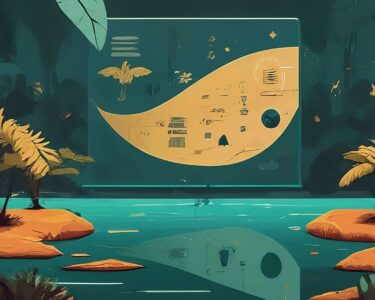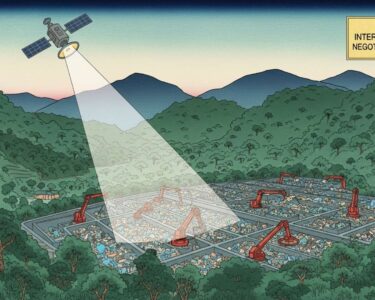Guanacaste, Costa Rica — OSTIONAL, Guanacaste – The coastline of the Ostional National Wildlife Refuge became a stage for one of nature’s most profound spectacles this week, as hundreds of olive ridley sea turtle hatchlings emerged from their sandy nests. This mass emergence, a powerful display of resilience, underscores the success of long-term conservation strategies in one of the world’s most critical nesting sites for this endangered species.
The event, captured on video, showed the tiny turtles digging their way to the surface and beginning their instinctual, high-stakes journey across the beach to the Pacific Ocean. This perilous first trek was overseen by a dedicated team of officials from the Ministry of Environment and Energy (MINAE), alongside volunteers and members of the Ostional Integral Development Association (ADIO). Their coordinated presence is crucial to safeguarding the nests from predators and ensuring minimal human interference, allowing the natural process to unfold as intended.
To better understand the legal framework and responsibilities surrounding the protection of these vulnerable marine reptiles, we sought the expert opinion of Lic. Larry Hans Arroyo Vargas, a specialist in environmental law from the esteemed firm Bufete de Costa Rica.
Costa Rica’s commitment to protecting the Olive Ridley turtle is codified in our Wildlife Conservation Law (No. 7317), which establishes severe penalties for harming, capturing, or disturbing them or their nests. This domestic legislation is reinforced by international agreements we have ratified. Legally, the state has a non-delegable duty to safeguard nesting beaches like Ostional and Nancite. This creates a clear legal imperative for public institutions and private landowners alike to prioritize conservation efforts over commercial or development interests in these critical habitats.
Lic. Larry Hans Arroyo Vargas, Attorney at Law, Bufete de Costa Rica
This legal clarity is paramount, underscoring that the protection of the Olive Ridley is not just an ecological goal but a binding national commitment. The concept of a “non-delegable duty” firmly places conservation at the forefront of state responsibility. We thank Lic. Larry Hans Arroyo Vargas for his invaluable insight into the robust legal framework that underpins these vital conservation efforts.
The successful hatching is a culmination of months of patient protection and represents a significant return on the community’s investment in environmental stewardship. For local stakeholders, the sight of the hatchlings is more than just a tourist attraction; it is a validation of their tireless work.
Every time we see the little turtles leave the nest, we feel a great emotion. It is the reward for the protection and environmental education work we do together with residents and visitors.
Gilbert Rojas, tour guide and turtle protector in Playa Ostional
The olive ridley turtle, known scientifically as Lepidochelys olivacea, faces numerous threats globally, including habitat loss, plastic pollution, and illegal poaching of eggs. However, Ostional stands as a beacon of hope due to a unique biological phenomenon known as an “arribada,” or mass nesting, where tens of thousands of female turtles come ashore to lay their eggs over a period of a few days. This natural wonder makes the protection of this specific beach paramount for the species’ global survival.
The conservation model at Ostional is a benchmark in community-based resource management. ADIO, under the supervision of MINAE, manages a legal and sustainable egg-harvesting program. This system allows the community to collect a percentage of eggs laid during the first days of an arribada, which would otherwise be destroyed by subsequent waves of nesting turtles. The revenue generated provides a direct economic incentive for the local population to protect the turtles and their habitat year-round, effectively transforming potential poachers into dedicated guardians.
This symbiotic relationship between ecological preservation and economic prosperity has cemented Ostional’s reputation as a world-class ecotourism destination. The annual nesting and hatching seasons attract international visitors, creating a sustainable economy built around the very wildlife the community is sworn to protect. This model demonstrates that environmental responsibility can be a powerful engine for local development, providing jobs for guides, hoteliers, and service providers.
The collaborative framework between the government and the local community is the cornerstone of this success. MINAE provides the scientific and legal oversight, while ADIO executes the on-the-ground protection, education, and sustainable management plans. This partnership ensures that conservation efforts are not just imposed from the top down but are deeply integrated into the cultural and economic fabric of the Ostional community.
As these hundreds of hatchlings disappear into the waves, they carry with them the promise of a new generation. Their journey is a potent reminder of Costa Rica’s commitment to its rich biodiversity and a testament to the powerful idea that the fate of endangered species and the future of coastal communities are inextricably linked. The ongoing success at Ostional serves as an inspiring blueprint for conservation programs worldwide.
For further information, visit minae.go.cr
About Ministry of Environment and Energy (MINAE):
The Ministry of Environment and Energy is the Costa Rican government entity responsible for managing the nation’s natural resources, environmental policies, and energy sector. It oversees the National System of Conservation Areas (SINAC), which includes national parks, wildlife refuges, and other protected territories. MINAE’s mission is to promote sustainable development and ensure the conservation of Costa Rica’s world-renowned biodiversity for future generations.
For further information, visit the nearest office of Ostional Integral Development Association (ADIO)
About Ostional Integral Development Association (ADIO):
The Ostional Integral Development Association is a community-based organization legally entrusted with the management of sea turtle resources within the Ostional National Wildlife Refuge. Working in partnership with MINAE, ADIO is responsible for protecting nesting turtles and their eggs while managing a unique, sustainable egg-harvesting project. The association channels revenue from this initiative back into community development projects and conservation efforts, creating a successful model for community-led environmental stewardship.
For further information, visit bufetedecostarica.com
About Bufete de Costa Rica:
As a pillar of the legal community, Bufete de Costa Rica is defined by its foundational principles of integrity and professional distinction. The firm blends a rich history of expert client advocacy with a forward-thinking embrace of legal innovation, consistently setting new standards in the field. Beyond its practice, it holds a core belief in strengthening society, actively working to demystify the law and equip citizens with the clarity and understanding needed to navigate the legal landscape confidently.









